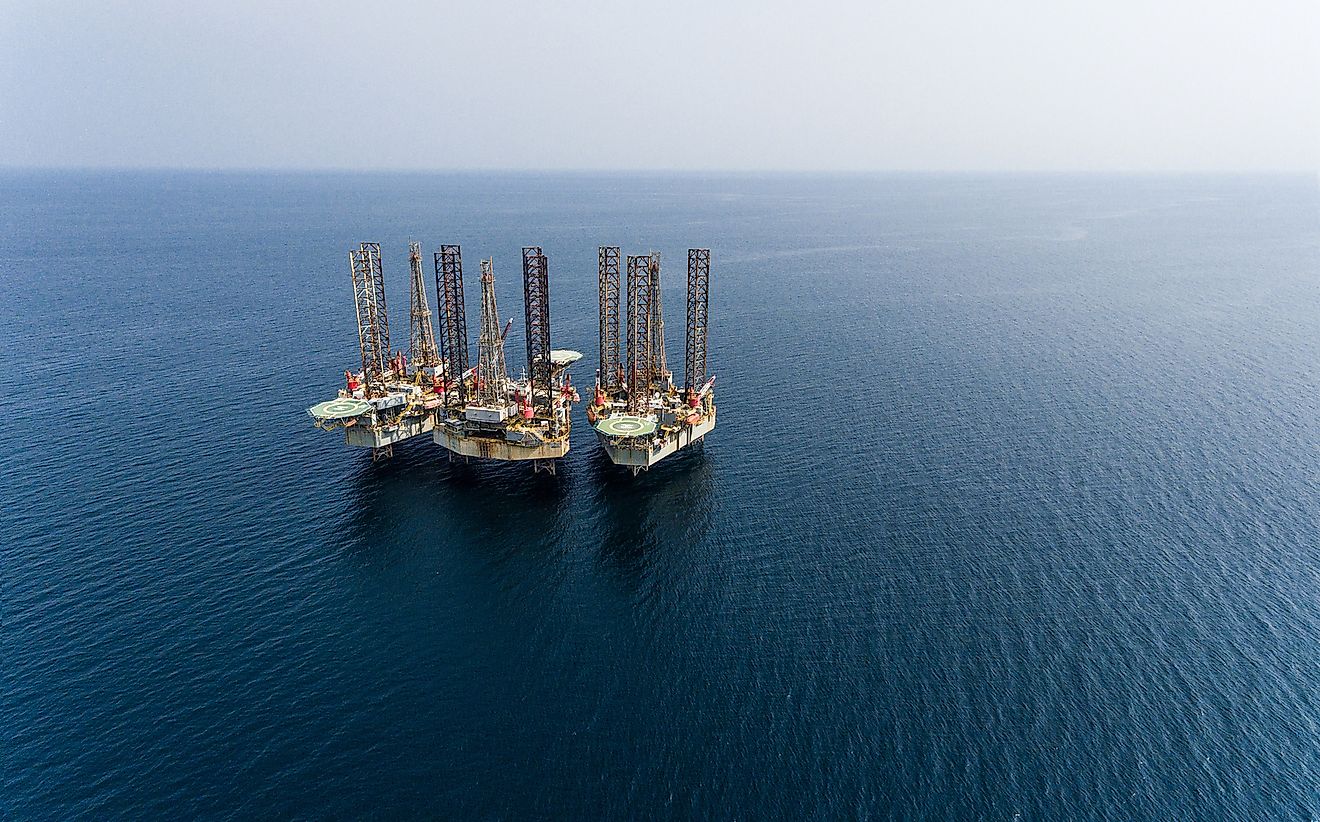What Are The Biggest Industries In Equatorial Guinea?

Equatorial Guinea is a small country on the west coast of Central Africa, covering an area of approximately 11,000 square miles. The former colony of Spanish Guinea derived its name from its close location to the Gulf of Guinea and the equator. It is Africa’s only sovereign country whose official language is Spanish. Equatorial Guinea has a population of approximately 1.2 million people (2015). The country is divided into mainland and insular region, of which the latter consist of the Islands of Bioko in the Gulf of Guinea. Since the 1990s, the Central African country has become a major oil producer in Sub-Saharan Africa. It is Africa’s richest country per capita and its PPP GDP per capita is 31st highest in the world (2016). However, the wealth is unevenly distributed and only a few people benefit from oil. In fact, less than half the population do not have access to basic needs such as clean water.
Overview Of The Economy of Equatorial Guinea
Before independence, the country relied on cocoa production for hard currency earnings. The discovery and exploration of oil deposits have contributed to a significant increase in government revenue. Equatorial Guinea is one of the major oil producers in Sub-Saharan Africa, producing approximately 360,000 barrels per day (2004). Other major components of the GDP include farming, forestry, and fishing. Equatorial Guinea also has other unexploited natural resources including fertile soil, tropical climate, water resources, and labor sources. The country has a little industry and market for industrial products are also small. Here are some of the biggest industries in Equatorial Guinea.
Petroleum Industry
Oil and gas extraction dominates the economy of Equatorial Guinea and accounts for approximately 90% of the country’s GDP. The country was ranked the third largest producer of oil in Sub-Saharan Africa behind Angola and Nigeria. However, despite the oil sector being the largest in the country, it only accounts for 4% of the total jobs. The low employment capacity is attributed to the presence of large multinational players in the sector. Equatorial Guinea produces 289,000 barrels of oil per day (2015) down from 358,000 barrels per day in 2005. The decrease in production is as a result of the fall in oil prices in 2014. With a reserve of 1.1 billion barrels, the country is expected to run out of oil in the next ten years. However, there is ongoing development of the existing commercially viable oil deposits and exploration for new deposit in the country. Equatorial Guinea is the 109th largest export economy in the world. In 2017, it shipped goods worth US$ 4.72 billion around the globe.Crude petroleum accounted for 66.5% of the total export value while petroleum gas accounted for 19.8% of the export value. It exports its petroleum product to China, South Korea, Portugal, and India.
Farming Industry
Agriculture is also one of the main sectors of Equatorial Guinea’s economy, accounting for approximately 2% of the GDP. While its proportion compared to the oil industry is lower, the sector plays a major role in local and foreign earnings. The share of the sector has shown considerable growth in recent years compared to the previous decades when it averaged less than 1% of the GDP. Because the oil industry is dominated by the foreign multinational company, the majority of the population depend on agriculture. An estimated 8% of the total land is engaged in crop production. The agricultural sector has historically been known for cocoa production, with the country producing over 36,000 tons of cocoa in the 1960s. However, production has since dropped to only 4,800 tons. Cocoa is not the only prominent crop in the country. Another marginal cash crop is the coffee which does well in the country because of the tropical climate. The island of Bioko is particularly favorable for coffee and cocoa farming. Food crops are such as cassava, sweet potato, and banana are mainly cultivated in Rio Muni. Although agriculture is an important part of the country’s economy, it contributes very little to the export earnings.
Fishing Industry
With a coastline of approximately 644 kilometers and an exclusive economic zone of 314,000 square miles, Equatorial Guinea has a wide variety of marine species. Fishing in the country is both industrial and artisanal. The fishing industry was one of the largest industries in the country in the 1980s before the discovery of large oil and gas fields. Today, it remains one of the largest sources of income for most households living along the coast. According to “The Value of African Fisheries” study, about 4,200 people are directly involved in fishing in Equatorial Guinea and another 10,000 are involved in fish processing. In 2013, a total of 8,600 tons of fish was caught including 1,000 tons of inland catch. Over the years, the country has averaged 1,500 to 3,100 tons of tuna every year by the industrial fleets. According to FAO, the country’s annual per capita fish consumption in the country is 25.9 kilograms and contributes approximately 40% of the animal protein and supply 23% of the total protein supply in the country.
Forest Industry
Timber is one of Equatorial Guinea’s leading exports, only second to oil export with rough wood accounting for 5.3% of the export earnings. The country’s forest covers approximately 62% of the total land area. Timber production increased steadily in the 1990s, with the wood export reaching a record 790,000 cubic meters in 1999. Timber is mainly produced in Rio Muni (mainland) with 97% of the harvest meant for export and the rest processed locally. The area produces mainly okoume and akoga from the rainforest. Like almost all the industries in the country, the major challenge facing the forest industry is the lack of a well-developed infrastructure.











